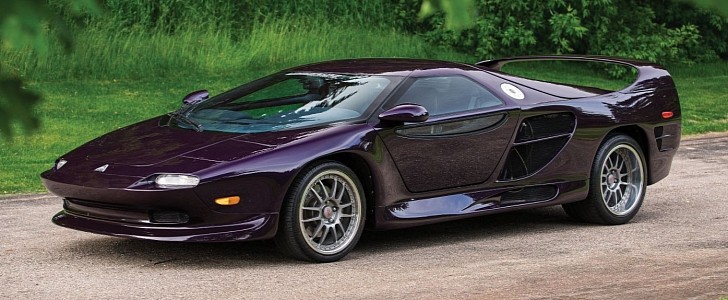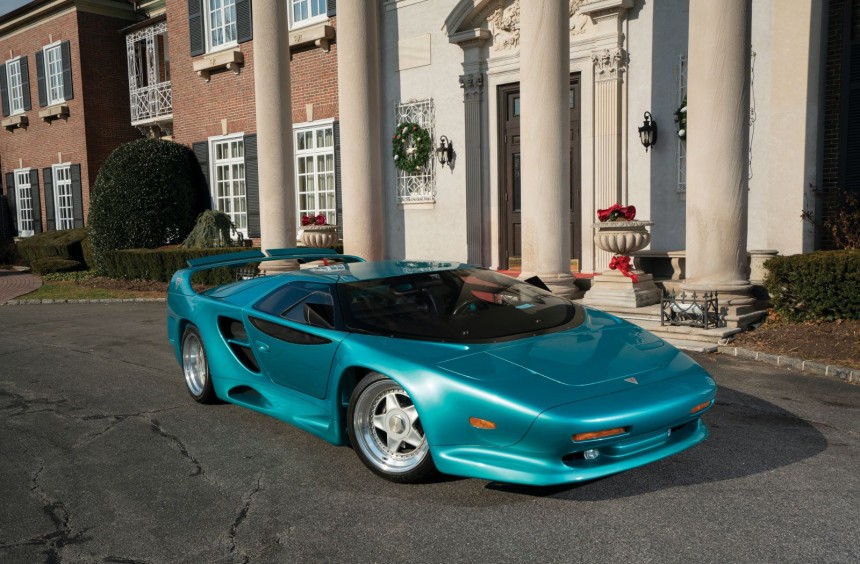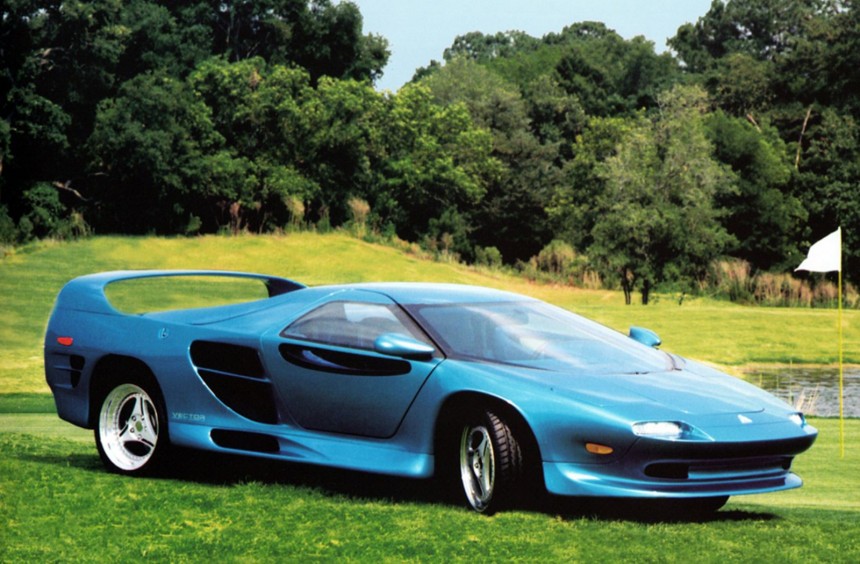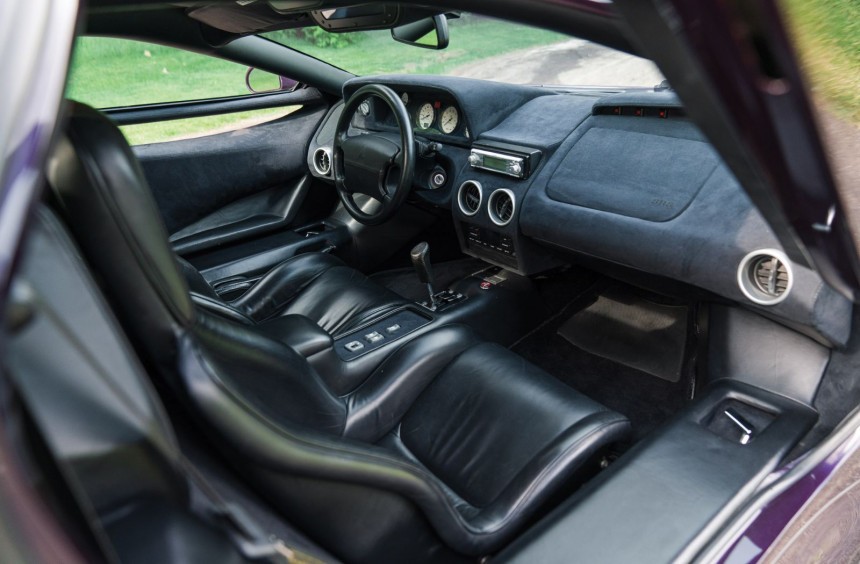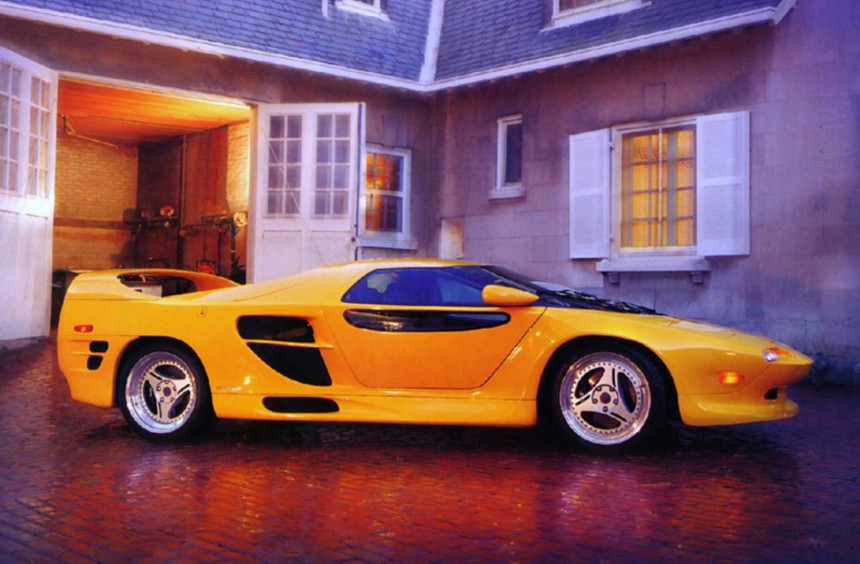After creating the W8, America’s first production supercar, Vector followed up with M12, a jaw-dropping high-performance machine based on the Lamborghini Diablo, arguably the coolest, most capable Italian car of the 1990s.
The last decade of the twentieth century saw carmakers release some of the most incredible machines of all time, things such as the Honda/Acura NSX, Bugatti EB110, Jaguar XJ220, Lamborghini Diablo, or the legendary McLaren F1.
In the United States, the first-generation Dodge Viper also debuted in 1991, but an even crazier supercar was being developed, and it didn’t come from any of the established Detroit-based manufacturers.
In California, Gerald "Jerry" Wiegert, the chief designer, and founder of Vector Aeromotive was working hard on a worthy successor for the W8, the fascinating supercar unleashed on public roads a year earlier.
Called WX-3, it was conceived to be a much more refined variant of its predecessor in every way conceivable. It should have been available in either hardtop coupe or roadster configurations with an improved version of the W8’s twin-turbo V8. Vector planned two different engine options that would produce either 600 hp in the entry-level model or a massive 1,200 hp on the most capable variant, a figure that would have made it the fastest and most powerful production car of all time by a large margin.
Both versions were revealed at the 1993 Geneva Auto Show and Wiegert was searching for partners to fund the project so he could begin production, but the story took a dramatic twist when a hostile takeover was initiated by the primary shareholder, Megatech. The Indonesian company which aimed to become one of the leading sports car manufacturers in the world eventually got their hands on Vector and in 1994, they also took over Lamborghini from Chrysler.
The new management dismissed Wiegert from his position as CEO but allowed him to continue as chief designer. The founder refused to continue, sued the new board, and won back the design copyrights for the WX-3, the equipment, and remaining unsold W8 production versions.
Megatech subsequently moved Vector’s operations to Jacksonville, Florida, in the same facility used by Lamborghini North America. Since they couldn’t build the highly anticipated WX-3, they decided to develop a new car called M12 around the successful Diablo.
Looking to capitalize on the success of the prototypes revealed at Geneva in 1993, Megatech hired a team of experienced designers led by Peter Stevens, the man who drew up the McLaren F1 alongside Gordon Murray.
They created a carbon-reinforced fiberglass body that loosely resembled the WX-3, but because it had to be fused with an elongated version of the Diablo chassis, the final result looked weird, to say the least. It had a compact front end with a large, curved windshield and pop-up headlights taken from the Lamborghini flagship. This part looked promising but the rear end which housed the enormous powertrain was just too long, making the car’s look like a futuristic pickup with an aggresive tonneau cover and a big spoiler fitted on top.
The interior was also based on the Diablo which meant that all the aircraft-inspired features that made the W8 famous were now gone.
Behind the cabin stood the Bizzarrini-designed V12, in the exact same configuration as the aforementioned Italian supercar. It displaced 5.7 liters and could produce up to 492 hp, 133 ponies less than what the W8’s Rodeck twin-turbocharged V8 could spit out. It was linked to the same ZF 5-speed manual found in the Diablo, but the gearbox was positioned behind the engine, rather than in front of it.
The rest of the mechanical components such as the suspension, the rack and pinion steering system or the Brembo-sourced brakes were all taken from the Diablo.
Performance was nearly identical, with a 0 to 60 mph (0-97 kph) acceleration time of 4.8 seconds and a top speed of 189 mph (304 kph), about 12 mph (20 kph) slower than the iconic Lambo.
The M12 made its debut at the 1996 Detroit Motor Show but much to the new ownership’s dismay, it wasn’t met with the same positive reaction as the WX-3. Things were so bad that production had to be suspended for a few months because nobody wanted to buy it, even if it was almost $40,000 cheaper than a Diablo.
Vector eventually managed to register a few orders and production resumed. The company even decided to convert a pre-production prototype into a race car and enter it in the famous 24-hour race at Le Mans, yet a series of mechanical problems prevented it from competing.
In total, only 14 cars were sold with an additional 3 prototypes (including the race car) being built through 1999 when production ceased. By now the company was in huge financial trouble, Megatech had sold Lamborghini to VW Group’s Audi division a year earlier and fell behind on payments for the powertrains, so it eventually declared bankruptcy. On a positive note, Jerry Wiegert managed to acquire all of the Vector assets after winning another lawsuit.
Although it was an interesting car powered by a legendary engine, the American Diablo never came close to the success of its Italian sibling. It even won an “award” from Autoweek magazine for the worst car ever tested in the history of the publication.
Despite this, the M12 is a highly-valued collectors’ item today with low-mileage examples in perfect condition demanding between $200,000 and $300,000. You can watch one of them being driven and loaded up into a trailer in the video below posted on YouTube by DtRockstar1.
In the United States, the first-generation Dodge Viper also debuted in 1991, but an even crazier supercar was being developed, and it didn’t come from any of the established Detroit-based manufacturers.
In California, Gerald "Jerry" Wiegert, the chief designer, and founder of Vector Aeromotive was working hard on a worthy successor for the W8, the fascinating supercar unleashed on public roads a year earlier.
Both versions were revealed at the 1993 Geneva Auto Show and Wiegert was searching for partners to fund the project so he could begin production, but the story took a dramatic twist when a hostile takeover was initiated by the primary shareholder, Megatech. The Indonesian company which aimed to become one of the leading sports car manufacturers in the world eventually got their hands on Vector and in 1994, they also took over Lamborghini from Chrysler.
The new management dismissed Wiegert from his position as CEO but allowed him to continue as chief designer. The founder refused to continue, sued the new board, and won back the design copyrights for the WX-3, the equipment, and remaining unsold W8 production versions.
Megatech subsequently moved Vector’s operations to Jacksonville, Florida, in the same facility used by Lamborghini North America. Since they couldn’t build the highly anticipated WX-3, they decided to develop a new car called M12 around the successful Diablo.
They created a carbon-reinforced fiberglass body that loosely resembled the WX-3, but because it had to be fused with an elongated version of the Diablo chassis, the final result looked weird, to say the least. It had a compact front end with a large, curved windshield and pop-up headlights taken from the Lamborghini flagship. This part looked promising but the rear end which housed the enormous powertrain was just too long, making the car’s look like a futuristic pickup with an aggresive tonneau cover and a big spoiler fitted on top.
The interior was also based on the Diablo which meant that all the aircraft-inspired features that made the W8 famous were now gone.
The rest of the mechanical components such as the suspension, the rack and pinion steering system or the Brembo-sourced brakes were all taken from the Diablo.
Performance was nearly identical, with a 0 to 60 mph (0-97 kph) acceleration time of 4.8 seconds and a top speed of 189 mph (304 kph), about 12 mph (20 kph) slower than the iconic Lambo.
The M12 made its debut at the 1996 Detroit Motor Show but much to the new ownership’s dismay, it wasn’t met with the same positive reaction as the WX-3. Things were so bad that production had to be suspended for a few months because nobody wanted to buy it, even if it was almost $40,000 cheaper than a Diablo.
In total, only 14 cars were sold with an additional 3 prototypes (including the race car) being built through 1999 when production ceased. By now the company was in huge financial trouble, Megatech had sold Lamborghini to VW Group’s Audi division a year earlier and fell behind on payments for the powertrains, so it eventually declared bankruptcy. On a positive note, Jerry Wiegert managed to acquire all of the Vector assets after winning another lawsuit.
Although it was an interesting car powered by a legendary engine, the American Diablo never came close to the success of its Italian sibling. It even won an “award” from Autoweek magazine for the worst car ever tested in the history of the publication.
Despite this, the M12 is a highly-valued collectors’ item today with low-mileage examples in perfect condition demanding between $200,000 and $300,000. You can watch one of them being driven and loaded up into a trailer in the video below posted on YouTube by DtRockstar1.
